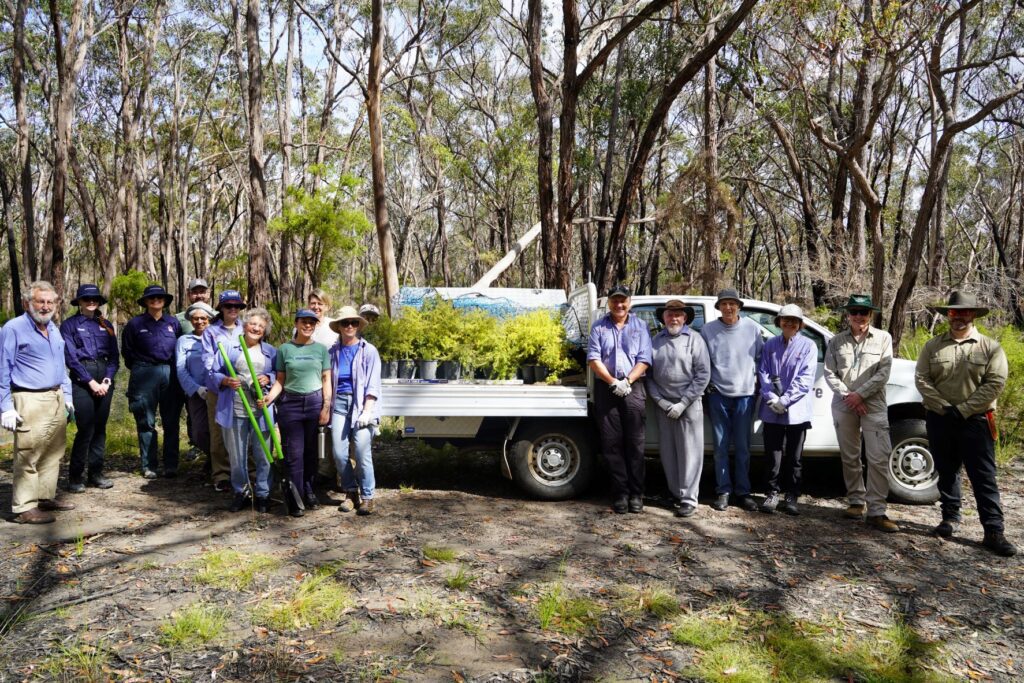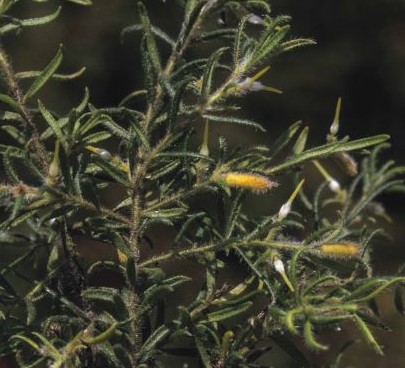
It’s not the prettiest of shrubs and has a name to match, but the endangered Hairy Geebung is set to thrive once again in bushland near Campbelltown.
Scientists at the Australian Botanic Garden at Mt Annan have been propagating 100 Hairy Geebungs, or to give them their proper name, the plant, Persoonia Hirsuta.
The 100 plants have now been translocated to bushland at Kentlyn as part of a project that has brought together members of Kentlyn Bushcare, the Australian Botanic Garden, NSW Department of Planning and Environment’s Saving Our Species team and Campbelltown Council (pictured above with some of the plants).
Distinguishable by the long coarse hairs on its yellow flowers, the Hairy Geebung is scattered throughout Sydney and NSW but has gradually declined over the past two decades, with many adult plants wiped out during the 2019-20 Black Summer Bushfires.
“The Hairy Geebung previously flourished in our bushland so it’s encouraging to see the efforts being made to restore the population of this endangered species,” says Mayor George Greiss.
“This exciting project could make a big impact on restoring an important plant species across NSW so we’re proud to be working alongside other organisations on this important project,” Cr Greiss said.

Hairy geebung shrubs provide a key food resource for local wildlife, such as birds, kangaroos and wallabies.
Dr Nathan Emery, a restoration biology officer at the Australian Institute of Botanical Science based at the botanic garden, is helping council and Kentlyn Bushcare members translocate the endangered plant.
Dr Emery said his team’s research into restoring the sprawling shrub with distinct yellow flowers began in 2014 thanks to funding by the Australian Coal Industry’s Research Program (ACARP).
The aim was to reintroduce the species back into the landscape at mine sites.
“Working closely with the horticulturalists in our nursery team, we were able to propagate more than 400 plants at the Australian Botanic Garden Mount Annan, which at the time was possibly more than the number of plants found in the wild,” Dr Emery said.
“Following the project’s success, ACARP was supportive of us to collaborate with Campbelltown City Council to also translocate this species where it once flourished locally.
“It has also been a joy to work with the Kentlyn Bushcare group, sharing our expertise about this threatened species and providing conservation, propagation and translocation advice for Persoonia species,” Dr Emery said.
Data collected from the program will be used to help with the management and propagation of other small or declining populations of Hairy Geebung across Sydney.
Council will work with Kentlyn Bushcare to monitor the ongoing success of the translocation.
The project is funded by the Wettenhall Environment Trust in conjunction with Campbelltown City Council and Saving our Species.
